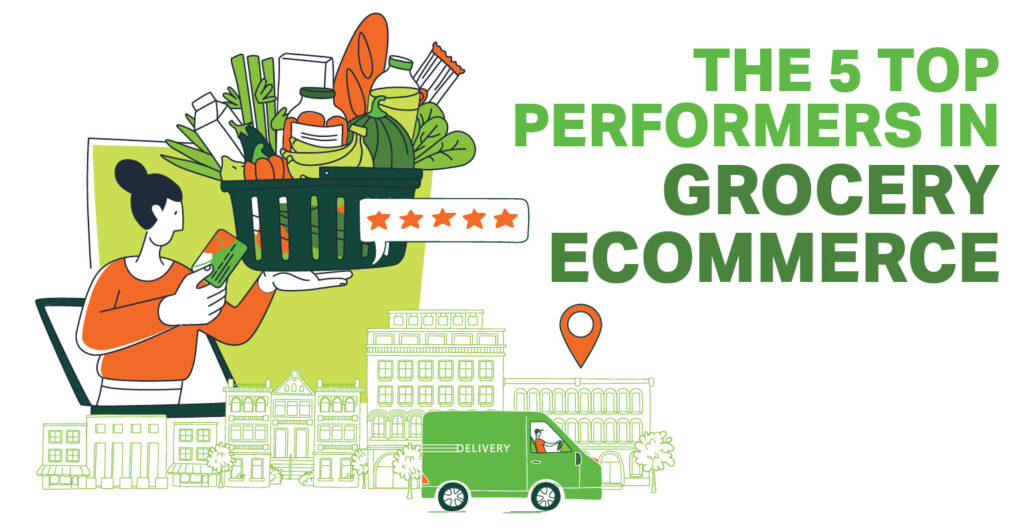Food retailers have made some great strides in improving the ecommerce services that they provide, but there are still opportunities to make the experience even better for their customers.
The 2023 Ipsos Ecommerce Experience Report found that Walmart and Target are leading the way in both delivery and curbside pickup, although several traditional supermarket operators, including Albertsons, Food Lion, and H-E-B, are also performing well in certain aspects of their ecommerce services.
“Ecommerce is really about convenience, communication, and completeness,” said Brad Christian, head of strategic growth, U.S. channel performance at Ipsos, listing what he called the “three C’s” of ecommerce. “If this isn’t a convenient and flexible way of conducting business with your brand, then I’m less inclined to want to use it.”
The Ipsos report drew upon a fall 2023 survey of 1,200 Americans, a series of mystery shops, and an analysis and ranking of key purchase consideration drivers across online, buy-online/pick-up in store, and curbside pick-up.
Here are five of the top-performing food retailers highlighted in the report:
Walmart
Walmart achieved the top score in both delivery (a tie with Target) and curbside pickup in the Ipsos report, making significant gains from the previous year’s report. Its investments in technology to help drive efficiency and streamline processes during the past two years have apparently yielded positive results.
“In early 2023 we saw that brands like Walmart and Target were making substantial investments in their ecommerce offer, and Walmart specifically was focused heavily on ecommerce store automation,” said Christian.
Using automation to help with tasks such as monitoring inventory levels and out-of-stocks in real time can help retailers improve order completeness and accuracy, he said.
Walmart also garnered a good score when it came to comparing the ease of both delivery and curbside pickup relative to the in-store shopping experience. With a score of 75% for ease of delivery, the retailer came in second only to Aldi, which scored 78% (vs. 60% for the grocery industry overall). In terms ease of curbside pickup, Walmart and Kroger were tied for second place at 77%, behind only Amazon Fresh at 79%.

Target
Target has also invested significantly in its ecommerce capabilities and has become adept at driving efficiency by leveraging its stores to fulfill online orders.
“At any given time, Target may fulfill 96.8% of their online orders through their actual stores, not necessarily distribution centers,” said Christian.
An Insider Intelligence report last year explained that Target has been investing in expanding its network of “sortation centers” that collect orders from as many as 40 different stores and grouping them by delivery routes (often using Shipt, its in-house delivery network) to optimize efficiency and create delivery density.

Albertsons
The Ipsos report identified Albertsons as a “Brand to Watch” in this report, citing its improvements in both delivery and curbside pickup.
The retailer shared Brand to Watch honors for its delivery service with both Target and Walmart and was named alongside Walmart as a Brand to Watch for curbside pickup.
Albertsons was among the top performers in multiple areas of the report, perhaps none more important than customers’ indication that they would use the service again. Albertsons was the top performer in delivery for intent to use the service again, at 61%, far outpacing the industry overall score of 44%.
Albertsons also performed well above average when it came to communication around delivery, and it was the top performer when it came to communication around curbside pickup, at 97%.
“One of the things we studied is the idea of whether the ecommerce experience was better than physically coming into the store,” said Christian. “Is it more or less problematic? For our star performers like Target and Walmart and Albertsons, very few consumers suggest that there were any challenges or problems and that it was easily a better, more convenient experience than physically coming into the store.”

Food Lion
Perhaps one of the most critical aspects of the e-commerce experience for consumers is the communication that occurs between the retailer or the third-party shopping service and the customer, Christian said.
Food Lion excelled in the area of communication for both delivery and pickup, the report found, with scores of 83% and 95%, respectively. Its 83% score on satisfaction with communication (text, emails, notifications) around delivery tied it for the top spot with Whole Foods, and its 95% rating for curbside pickup was second only behind Albertsons.
“There is a sweet spot around how you communicate with the consumer,” Christian said, noting that too much back-and-forth communication with the customer during the trip can ruin the experience.

H-E-B
Several retailers outperformed the industry overall in a few select areas, but H-E-B stood out for its rankings near the top of almost every metric in both delivery and curbside pickup.
The retailer was a close second behind delivery performance leaders Target and Walmart and tied with Albertsons. In addition, 76% of consumers said they were satisfied with the communication they had with H-E-B, which exceeded the overall industry score of 72%, and 48% said they were likely to use the delivery service again, beating out the 44% score for the industry overall.
When it came to curbside pickup performance, H-E-B was in a three-way tie for second place with Amazon Fresh and Whole Foods, behind only Walmart. Sixty-three percent of consumers said they would be likely to use H-E-B’s curbside pickup again, vs. a score of 58% for the industry overall.


